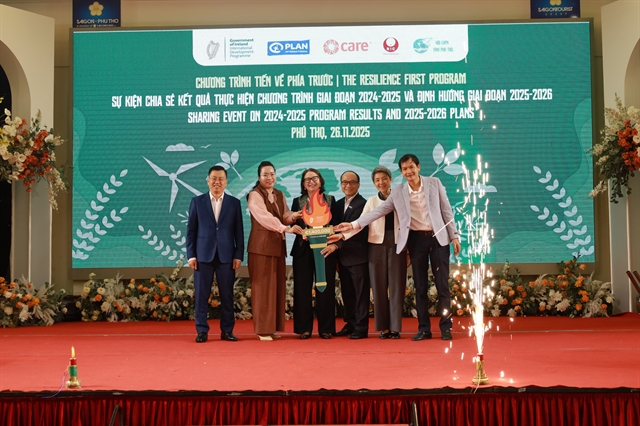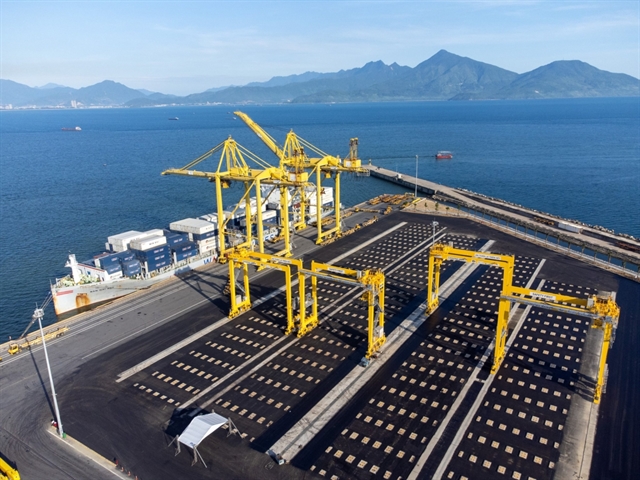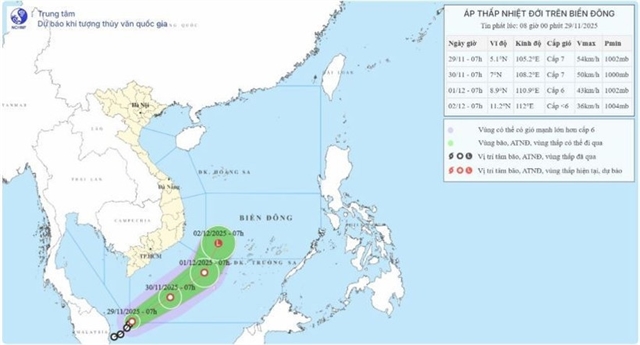 Society
Society


|
| Weaving machines have nearly replaced all ancient looms in the making of silk products in Vạn Phúc silk village, Hà Nội. — VNA/VNS Photo Minh Quyết |
HÀ NỘI — Việt Nam's international integration has brought both challenges and opportunities for traditional craft villages, with the use of scientific and technical advances in production considered vital for them to thrive.
In recent years, traditional craft villages have made significant contributions to the national economy.
According to statistics from the Việt Nam Traditional Craft Village Association, there are more than 5,400 craft villages across the country but most of the villages are small scale and products are made by hand.
“The Vietnamese craft village system has a long tradition. But they are facing many difficulties to keep up with today's economic and social developments,” said Lưu Duy Dần, the association’s president.
“If we do not integrate or catch up with international standards, our craft villages will continue lagging behind and be unable to escape manual and small-scale production,” Dần said.
“So, the villages must apply technological advances in production for sustainable development and higher productivity and competitiveness,” he said.
According to Hà Thị Vinh, general director of Quang Vinh Ceramics Ltd., Company in Bát Tràng Ceramic Village of Hà Nội’s Gia Lâm District, the use of technology in production has helped reduce production costs by more than 30 per cent.
More importantly, the percentage of defective products has dropped significantly and the design of the products are also more diverse thanks to machine production, said Vinh.
“Our products are more competitive in the market,” said the general director.
Meanwhile, Phạm Khắc Hà, president of Vạn Phúc Wormsilk Craft Village’s Association in Hà Đông District, Vạn Phúc Village now has 200 households engaged in silk weaving.
Before, most of the silk products were woven manually. But in recent years, many households have shifted to using machines, said Hà.
This has helped Vạn Phúc silk products meet higher demands in terms of quantity, quality and design, he said.
Similarly, environmental problems in Phú Đô Village's rice noddle production were effectively solved thanks to using machines and renewable energy in production stages such as powder grinding, mixing and cooking.
The discharge of residue and wastewater into the Nhuệ River was stopped.
In fact, mechanisms to encourage and support craft village households to innovate technology, apply science and technology through industrial promotion policies, industrial and handicraft development projects have made many households change their thinking of production to invest in modern machines to improve efficiency.
More importantly, the change has helped craft villages shorten manual production stages, reduce their labour force and improve their environmental impact.
Đào Hồng Thái, director of the Hà Nội Industrial Promotion and Development Consultation Centre, said many traditional craft villages had applied technological advances in production with the assistance of the municipal authority and ministries.
Since 2016, the centre had provided assistance for 64 rural industrial entities to innovate technologies in production] to increase labour productivity and reduce environmental pollution, according to the centre’s director.
This year, Hà Nội aims that craft villages will account for 8.5 per cent of total industrial economic value.
The infrastructure of 50 villages will be improved and environmental issues of the 50 worst polluting villages are expected to be solved.
About 1 million jobs for rural areas will be created with per capita income of VNĐ35-40 million (US$1,500-1,700) per year.
In 2021-2025, the city has set targets that more than 10,000 businesses and rural industrial establishments will get assistance from the city’s industrial promotion programme, while 50,000 jobs will be created for rural workers, export turnover from handicraft products will increase by 5-8 per cent and 20,000 items with modern designs for export will be produced, said Thái.
To achieve these goals, the city will continue to implement many policies to support craft villages, focusing on encouraging the application of new technologies to replace manual production, he said.
The production establishments will also be given financial assistance to expand facilities and labour training.
Along with technological application to increase productivity and cut production costs, branding for craft villages is also vital for sustainable development, said Dần.
The villages should push co-operation in branding and promoting products in international markets, he suggested. — VNS




